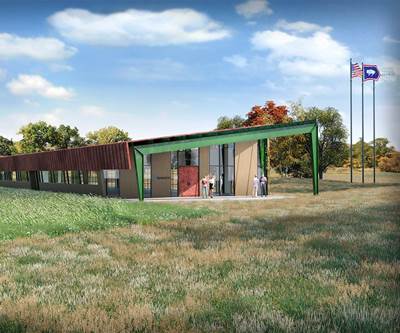Research of developing coal, oil into low-cost carbon fiber advances
Western Research Institute and academic and industry partners advance into the second year of a research project to turn coal, crude oil and biomass into low-cost carbon fiber.
A research project led by Western Research Institute (WRI, Laramie, Wyo., U.S.), aimed at lowering the cost of carbon fiber for use in the automotive industry, has been approved by the U.S. Department of Energy (DOE) to proceed into the second year of a three-year program.
The carbon fiber research project, titled “Consortium for the Production of Affordable Carbon Fibers in the United States,” supports the program goals of the DOE Vehicle Technology Office (VTO), within the Office of Energy Efficiency and Renewable Energy (EERE), to reduce the weight of cars by lowering the cost of carbon fibers to $5 per pound or less, which reportedly will result in improved fuel economy and reduced emissions. The initial cost analysis from WRI predicts that the cost to produce carbon fiber will be lower than the $5 per pound target identified by the automotive industry.
According to Don Collins, WRI CEO, during the first year three materials were studied as potential candidates for natural carbon fiber: coal, crude oil and biomass. The coal and crude oil produced pitch-based carbon fiber, while the biomass produced PAN-based fiber. Each type of fiber, Collins says, has different properties making it suitable for particular applications.
All three materials passed the project’s strength goals for phase one of the project, Collins says. Going into the second year, the researchers plan to improve the quality of the materials aimed toward production. Another project goal is to develop a predictive modeling software to more accurately predict how changes in both the starting material composition and the production processes relate to carbon fiber strength.
“Our team exceeded the first-year goals, and we are very excited for the progress to continue in the second year of our project,” says Collins. “We greatly appreciate the confidence this decision shows in our team.”
The WRI-led consortium also includes members of the University of Wyoming’s Mechanical Engineering Department, researchers from the Massachusetts Institute of Technology (MIT) and Oak Ridge National Laboratories (ORNL, Oak Ridge, Tenn., U.S.) and several private firms. The project was selected for negotiations under a competitive funding opportunity with the final negotiated project valued at $5.2 million. Work on the project began in 2017. Industry partners include Ramaco Carbon (Sheridan, Wyo., U.S.) and industry advisor Solvay in South Carolina.
WRI is also partnered with a team led by the Grossman Group at the Massachusetts Institute of Technology, which applies advanced multiscale computer modeling (from atoms to carbon fibers) and machine learning predictive methods to identify how the various starting material compositions relate to the compounds produced in the multiple production stages, and finally in carbon fiber strength. The accuracy and precision of these predictive programs will be improved in the project’s second year, using additional data developed throughout the consortium team.
Additionally, a team from the University of Wyoming’s Department of Mechanical Engineering, led by Dr. Fertig and Dr. Frick, is fabricating tow-level composites from the fibers and developing advanced finite element modeling tools to improve the design of carbon fiber composite parts for cars.
Southern Research (Birmingham, Ala., U.S.), another member of the project’s consortium, is leading the work to make acrylonitrile from biomass-derived sugars. Advanced Carbon Products (Olive Hill, Ky., U.S.) is turning petroleum-derived pitch to carbon fiber. WRI is working with Ramaco Carbon for converting coal pitch compounds that are then spun into carbon fibers by team members at ORNL. ORNL also conducts fiber strength tests and provides data to MIT and other team members to improve carbon fiber production. WRI is in charge of the chemical characterization of the raw materials and precursors using leading-edge analytical tools, some of which were invented by WRI. That data is key to the development of the predictive models at MIT.
Related Content
Carbon fiber in pressure vessels for hydrogen
The emerging H2 economy drives tank development for aircraft, ships and gas transport.
Read MorePrice, performance, protection: EV battery enclosures, Part 1
Composite technologies are growing in use as suppliers continue efforts to meet more demanding requirements for EV battery enclosures.
Read MorePEEK vs. PEKK vs. PAEK and continuous compression molding
Suppliers of thermoplastics and carbon fiber chime in regarding PEEK vs. PEKK, and now PAEK, as well as in-situ consolidation — the supply chain for thermoplastic tape composites continues to evolve.
Read MoreMaterials & Processes: Resin matrices for composites
The matrix binds the fiber reinforcement, gives the composite component its shape and determines its surface quality. A composite matrix may be a polymer, ceramic, metal or carbon. Here’s a guide to selection.
Read MoreRead Next
Ramaco Carbon's innovation campus green-lighted
The iCAM research center will host researchers from national laboratories, universities, research groups and manufacturing organizations with the goal of using coal to create advanced carbon based manufactured products.
Read MoreComposites end markets: Energy (2024)
Composites are used widely in oil/gas, wind and other renewable energy applications. Despite market challenges, growth potential and innovation for composites continue.
Read MoreFrom the CW Archives: The tale of the thermoplastic cryotank
In 2006, guest columnist Bob Hartunian related the story of his efforts two decades prior, while at McDonnell Douglas, to develop a thermoplastic composite crytank for hydrogen storage. He learned a lot of lessons.
Read More
.jpg;width=70;height=70;mode=crop)
















.jpg;maxWidth=300;quality=90)








